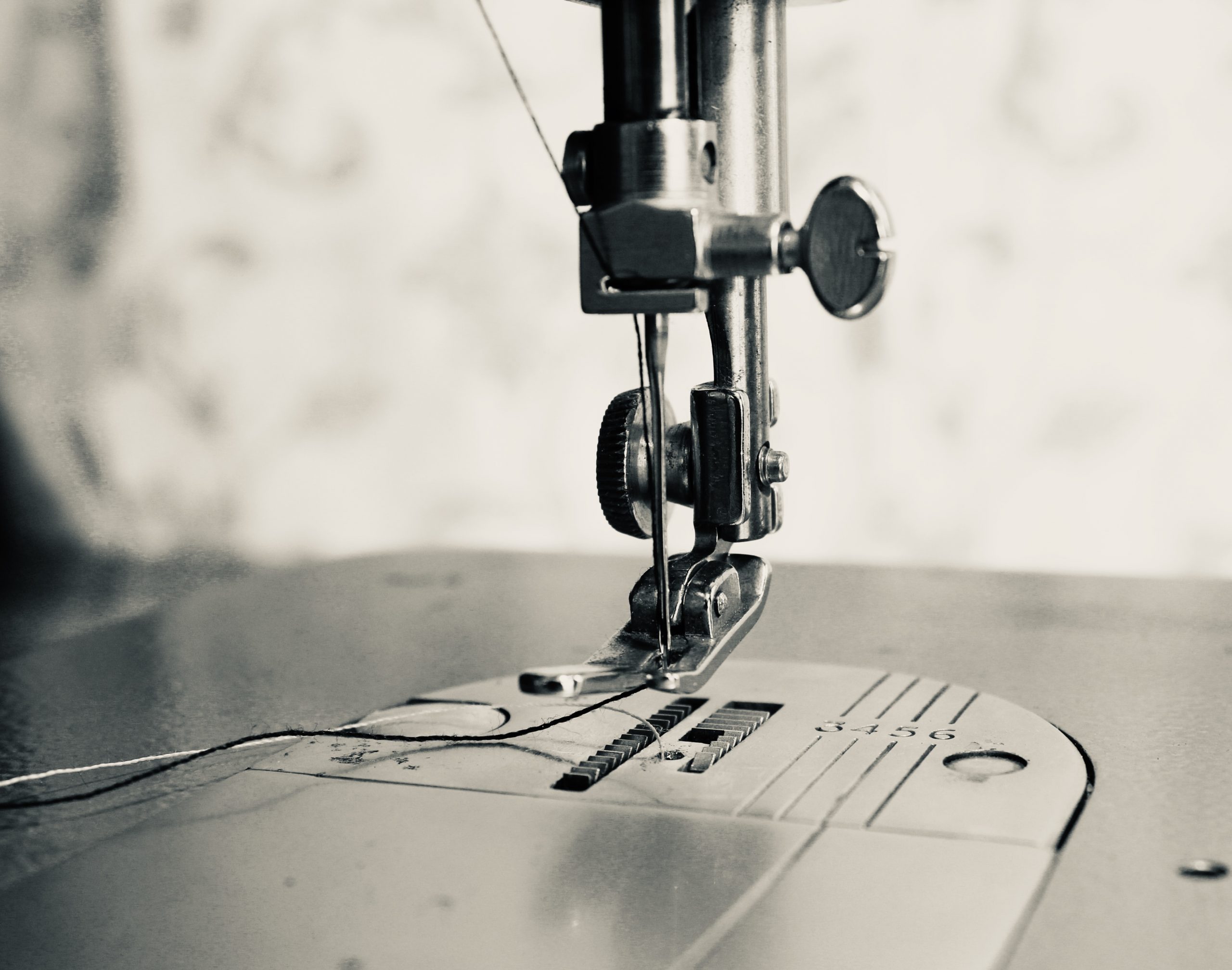Weighted blankets are increasingly popular these days – people would like to enjoy the related sleep benefits – research papers suggest that these sleeping aids can relieve people from a host of ailments. Studies even indicate that they help in improving sleep and inducing body relaxation.
Now, if you are thinking of purchasing a weighted blanket, then be ready to shell out way more than $100. Though, to save on costs, you can also get on with making a weighted blanket.
Only you need a sewing machine for creating a custom-made child DIY weighted blanket or an adult DIY weighted blanket to enjoy their sleeping-related and health-linked benefits – without bearing heavy costs.
Table of Contents
How to make weighted blanket
Through this guide, you can learn about the basics of weighted blankets, along with how to choose weighted blanket patterns and sizes. More so, the different weighted blanket filler options are detailed herein.
What is a DIY Weighted Blanket?
If you’ve ever felt the weight of bulky blankets on cold wintry nights, you may be well versed with their effectiveness and appeal. Though they are available in various styles and filling materials, many weighted blankets are designed similarly. Yes, they are sewn using soft fabrics for adding pouches bearing bulky materials to impose gentle yet firm pressure uniformly across your body.
An important point to note about weighted blankets and why they are deemed effectual for sleeping is the Deep Touch Pressure techniques via which they operate. Similar to massage therapy, DTP induces relaxation in the body while providing comfort and facilitating sleep.
Further, the weighted blanket fillings, coupled with DTP mechanisms, stimulate the body to produce the ‘happy’ hormones such as melatonin, dopamine, oxytocin, and serotonin. As such, the weighted blankets patterns are designed for relieving stress in the body while inducing sleep.
Also, data suggests that weighted blankets offer sleeping benefits to many people; and, in turn, they can improve their well being sans drugs.
Even so, weighted blankets are considered effective to help children and adults who are on the autism spectrum, as well as for treating other conditions like anxiety, ADHD, and anxiety.
Since weighted blankets have steadily been recording higher sales, you can now avail them in an array of models. Though, one reason why weighted blankets can be availed in varied styles is because different people vary in their preferences with respect to sizes and weights. For instance, children with autism and adults suffering from insomnia are advised different blankets.
Besides, putting together your own weighted blankets has cost-saving benefits (taking into account the cost of weighted blanket materials) and offers greater scope for customisation than the ready-made ones. So why not take advantage of the linked benefits? Below, you can know more about creating a DIY weighted blanket.
Weighted Blanket DIY Requirements
Fashioning your own weighted blanket is simple. Now, if you are looking to sew a weighted blanket and need help on how to make your own gravity blanket, only refer to our step-by-step guide. Herein, you can also obtain more information on what is a weighted blanket filled with.
Step 1: Decide Your Fabric
Both your choices of DIY fillers and fabrics for your weighted blanket are important, especially since people suffering from sensory issues are advised their use.
As part of the fabric selection process, you need to decide on two aspects: the weave and the material. More so, you can buy separate duvet covers for your inner blanket, particularly if they are composed of delicate Silk materials.
Under fabrics for weighted blankets, you can choose among varieties such as Silk, Polyester or Minky, and Rayon from Bamboo.
Cotton is deemed the best fabric for weighted blanket. The lightweight and breathable aspects of cotton materials make them a hit among many.
Also, Polyester or Minky fabrics are preferred for their plush and ultra-soft features. People having sensory problems are recommended to use weighted blankets that are composed of such fabrics.
And if you are looking for materials that are softer than cotton, then Rayon from Bamboo should be your pick.
However, weighted blankets that are composed of Silk are also considered the best blanket material because of their smooth texture. Also, Silk is grouped under breathable and natural fabrics. They are effective for people suffering from sensory problems as well.
Step 2: Pick your filling material
If you want to know what are weighted blankets filled with, then know that you’ve got a host of options to choose from. Among weighted blanket filling options, your choices are micro glass beads, plastic poly pellets, and dry grains or stones or beans.
Plastic pellets or plastic beads for weighted blankets
For filling weighted blankets, plastic poly pellets for weighted blankets as fillers are commonly used. Plastic pellets for weighted blankets are preferred because they are cheap, non-toxic and washable.
Though, you must take care to not wash weighted blankets having plastic filler beads at high water temperatures. At hot temperatures, the weighted poly pellets start melting and clumping together. Only wash the weighted blanket with poly pellets in cold water to be on the safer side.
DIY weighted blanket glass beads
In addition to weighted blanket pellets, glass bead filling are other options in weighted blanket inserts to apply weight. As compared to plastic fillers, the glass beads for weighted blankets are smaller in size. However, they help to evenly distribute the weight throughout the body.
More so, the best-quality weighted blanket glass beads remain in place owing to intricately-stitched quilted patterns. Additionally, they are smoother and finer in texture than other fillers for weighted blankets.

However, beads for weighted blankets are expensive. And if you want to know where to buy glass beads for weighted blanket, then understand that they are not freely available. Even so, online retail stores are your best bet for your purchases of weighted blanket glass beads.
Micro beads for weighted blankets are also popular because they do not get damaged when washed in washing machines.
When you dry your DIY weighted blanket having glass beads, the fillings do not clump together. As part of their maintenance measures, be sure to wash weighted blankets with glass filler beads in warm water and not hot water.
Dry Grains
For a DIY cheap weighted blanket, dry grain fillings make for a good choice. Also, such fillings serve as a cheaper poly pellets alternative. Normally, big companies do not use them to stuff weighted blankets with organic fillings, albeit people having budgetary constraints can opt for them. However, one of their drawbacks is that they are not machine-washable. Also, they are prone to attacks by pests.
Besides, do not use rice as stuffing material, because the DIY weighted blankets with rice fillings tend to rot. And in turn, they start to smell bad and attract bugs.
Step 3: Discern Your Ideal Blanket Weight
Are you perplexed about how heavy a weighted blanket should be? If yes, you need not worry. Only apply a basic formula: 10% of your overall body weight, add extra 1 to 2 pounds for children and2-3 pounds for adults.
Taking the example of a 90-pound child, a 10-pound blanket suffices for them. Using this ratio, your weighted blanket is adequately heavy to enjoy its benefits when sleeping underneath.
Now, keeping in mind that everybody has their own individual preferences, you can consider different weights when making your weighted blanket while taking your pick from the available options.
However, when choosing the weight of your weighted blanket, take into account the following three considerations.
- First, discern whether you are comfortable with pressure? Go ahead and use weighted blankets only if you do not become claustrophobic beneath heavy blankets.
- Second, you must determine your strength and make your choices accordingly. Avoid the use of weighted blankets if you have physical concerns. Otherwise, you may not be able to move under the blanket. Also, adults and children who have less upper body strength must opt for lighter blankets as a safety precaution.
- Third, decide whether you need the blanket only to place on the lap or to cover your entire body. Weighted lap blankets are heavier as compared to the full weighted ones.
Overall, a good suggestion is to start using weighted blankets that are suitable for your weight, then you can try heavier weights.
TIP: the best is to try our Corala Weighted Blanket Calculator to find the ideal weight. This calculator follows best practices for choosing the right weight for a weighted blanket.
Step 4: Selecting your blanket size
Weighted blankets that cover the entire body comfortably while overhanging only a little are preferred by many people. In the process, the weight of the blanket is applied on top and you can move freely underneath.

Both weight and size are connected and you should base your choices as per your preferences. For adults, heavy weighted blankets are the general suggestion, ensuring the weight spreads evenly across the body; also, they are easily maneuverable which further adds to their appeal.
Though, you can make heavy small blankets and lightweight large blankets as well. Nonetheless, you must only make sure that you can move beneath the blanket. Remember extra weight poses hazards, especially for young children and the elderly groups. So, make sure to take the mandatory precautions.
Many sleep experts also suggest a larger weighted blanket for using on your bed and the throw blanket size ones for cuddling on the couch with. Then, you do not have to drag the bulky blankets on the floor or will not find them heavy to carry.
Now, for a blanket weighing 7 pounds, you need 3.5 yards of 45 inches wide fabric for a blanket measuring 40 Width by 50 Length upon completion.

Assembling your DIY Weighted Blanket
The first step in constructing your weighted blanket is to
Gather the required components
- Weights as per your preferences
- Fabrics or materials of your choice, cut equally for both blanket sides
- Blanket batting, trim to the fabric size (optional)
- Scale
- Sewing machine
- Fabric pencil
- Funnel
- Fabric tape and ruler
- Scissors
- Pins
- Threads
Method of Construction
- Start with stitching the right and left edges of your fabric pieces. Follow by adding a horizontal center seam and join the two sides. Then, your blanket will contain two pouches: one at the top and the other towards the bottom. (if using batting, put 1-2 layers between the top and bottom fabric pieces and start sewing as you normally do)
- Split each pouch to create equal number of columns that measure 3-5 in width. Follow by sewing each column using triple stitches. Because the compartments will bear the weights.
- Next, take the scale to measure out the required amount of weights for each compartment. Calculate the apposite weight for each section by segregating your desired total weight by the number of required sections.
- Also, you must decide your weighted blanket fillers and follow by placing the weighted beads for blankets or poly fillers or plastic pebbles in the different compartments. Another alternative is to store the weights in suitably-sized cloth bags as another safeguard against spills. Using this method, you can also adjust your weighted pellets or weighted blanket beads as needed. All the same, you can test different weights by placing them in bags inside the compartments.
- After storing the selected weights in filled bags inside the compartments, continue by safety pinning the sections to close the open ends with triple stitches. Follow the same protocol for the remaining sections until your blanket is complete.
- Keep the blanket flat and inspect each side thoroughly to make sure the stitching is appropriate and the weighted blanket fill materials are securely placed. (doing so is important, especially if you have small children because loose weights can pose as choking hazards for them)
- Inspect your blanket for loose threads, holes, or tears. Also, always conduct the necessary repairs before washing for preventing further damage to your blanket or spilling of the weights.

DIY blanket care Instructions
Handmade weighted blankets are washable, though washing requires time and effort. Thus, using a cover with your weighted blanket is advantageous for reducing your washing efforts.
To wash your blanket with hand, use lukewarm water only. And with washing machines, go with gentle cycles to keep them clean. Also, use mild soap and chemicals during the washing process.
For drying your weighted blanket, use a dryer while maintaining on low heat cycles. Alternatively, lay them flat in sunny areas for efficient air circulation to dry them. They dry quickly because the added weights are non-absorbent stones or beads.
Use your DIY weighted blanket kit
Several variants of DIY weighted blankets can be availed. As such, you can consider using zipper or Velcro closures for the separate weight compartments. Albeit being a time-consuming process, this method permits increasing or decreasing weight. Also, then, you can wash your blanket easily.
Also, as part of your DIY weighted blanket kit, stitch together both weighted blankets and covers. By using a weighted blanket with cover, the inner blanket is kept clean. Also, the blanket is warmer for the cold nights.
- 7 Grounding Exercises for Better Sleep Tonight - January 17, 2024
- What Are Grounding's Sleep Benefits? - January 17, 2024
- Maximize Sleep Quality With Seasonal Grounding Strategies - January 17, 2024


